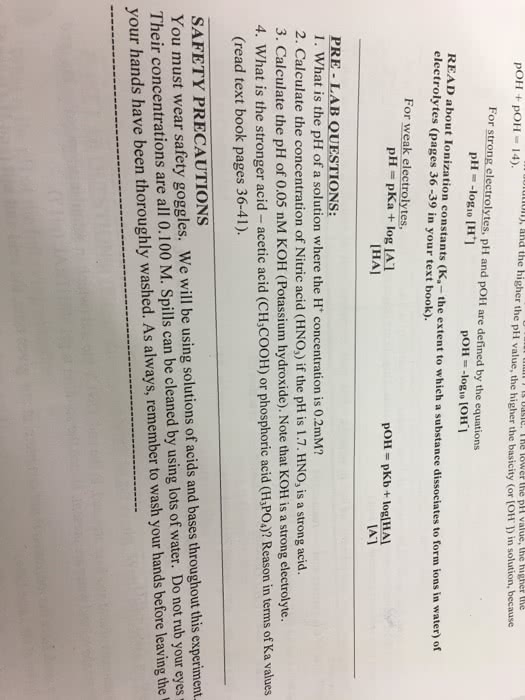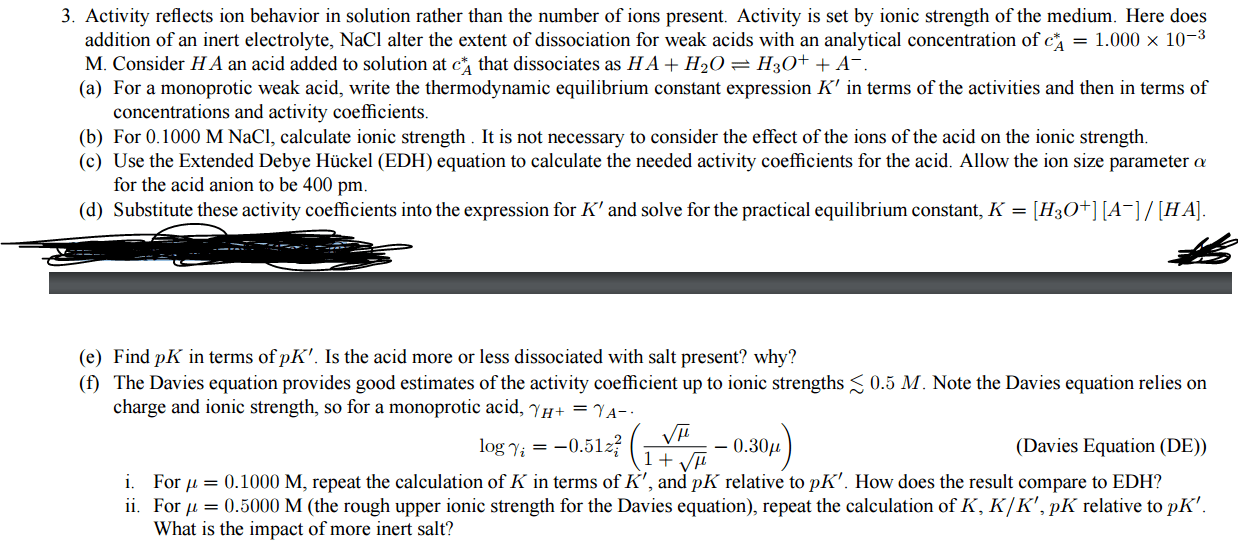CHM 111 Lecture Notes - Lecture 11: Hydrochloric Acid, Oxyanion, Potassium Hydroxide


26
CHM 111 Full Course Notes
Verified Note
26 documents
Document Summary
Recall that the strength of an electrolyte is determined by the extent of its dissociation into component ions in solution. A strong electrolyte completely dissociates into ions in solution whereas a weak electrolyte only partially dissociates, strong and weak acids are defined accordingly. A strong acid completely ionizes in solution whereas a weak acid only partially ionizes. In any case, here are some of the strongest acids: Nitric acid (hno3) sulfuric acid (h2so4) chloric acid (hclo3) perchloric acid (hclo4) Hydrochloric acid (hcl) hydrobromic acid (hbr) hydroiodic acid (hi) By analogy, a strong base is a base that completely dissociates in solution. The extent then, of the ionization of a base can be quantified with the base ionization constant, kb. Some of the strongest bases worth noting are: Sodium hydroxide (naoh) -> lye potassium hydroxide (koh) barium hydroxide [ba(oh)2] Binary acids are composed of hydrogen and a nonmetal and, in nomenclature, take the form:



